Personal Flight. The price of passenger vehicles has steadily dropped over time, making them affordable to most Americans. Airplanes, however, remain unaffordable to the majority of people, even though they’ve been around nearly as long. For a few thousand dollars, you can get a working, used car. The cheapest used aircraft starts at ten times that, given that the mechanical tolerances for aerospace are more stringent than for land-based cars, and the demand for small aircraft is substantially less.
Further, private aircraft have not enjoyed most of the safety advances seen in motor vehicles. Life-saving features such as airbags and crumple zones are rare, and only a select few planes feature roll cages and emergency parachutes.[43] As most private planes have forward-mounted engines, the lightweight fuselage (skeletal structure) of the aircraft often lacks the structural integrity to prevent the engine from crushing the occupants upon forward impact. The survivability of a crash, therefore, becomes a dubious prospect in many cases – the safety measure, by and large, is to not crash in the first place.
There are debatable causes to this slower progress of innovation in aviation, but what’s certain is that circumstances are changing. Some of these changes involve the greater inclusion of common-sense safety features into light aircraft. Yet other companies have embraced advances in technology that allow flying craft to be redesigned from the ground-up. Some of these are already seen today in the form of quadcopter drones.
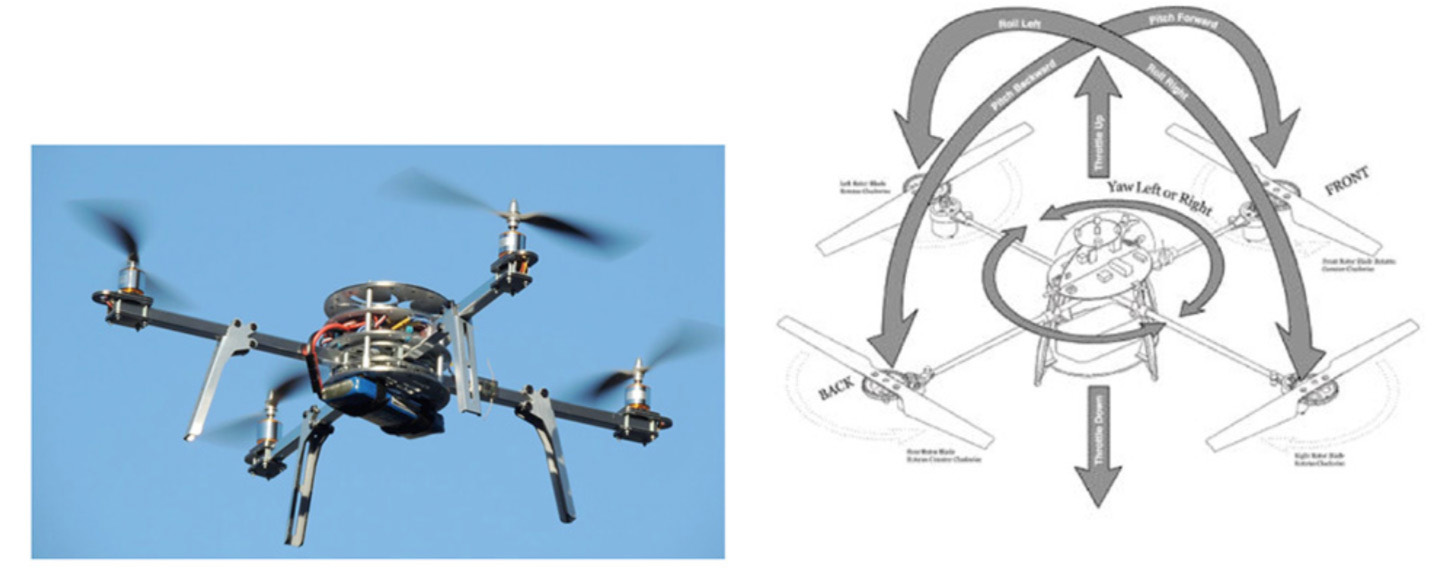
As opposed to helicopters that use two or four blades on a single rotor, quadcopters have four rotors on opposite and balanced points, thus removing the need for a stabilizing tail rotor. This makes quadcopters extremely well balanced, which in turn makes them both more maneuverable and easier to fly than traditional aircraft.
The concept of a quadcopter large enough to carry people (if only for short distances) has already been proven to work with today’s materials. The SureFly personal flying vehicle is one example of quadcopter innovation reaching commercial viability.
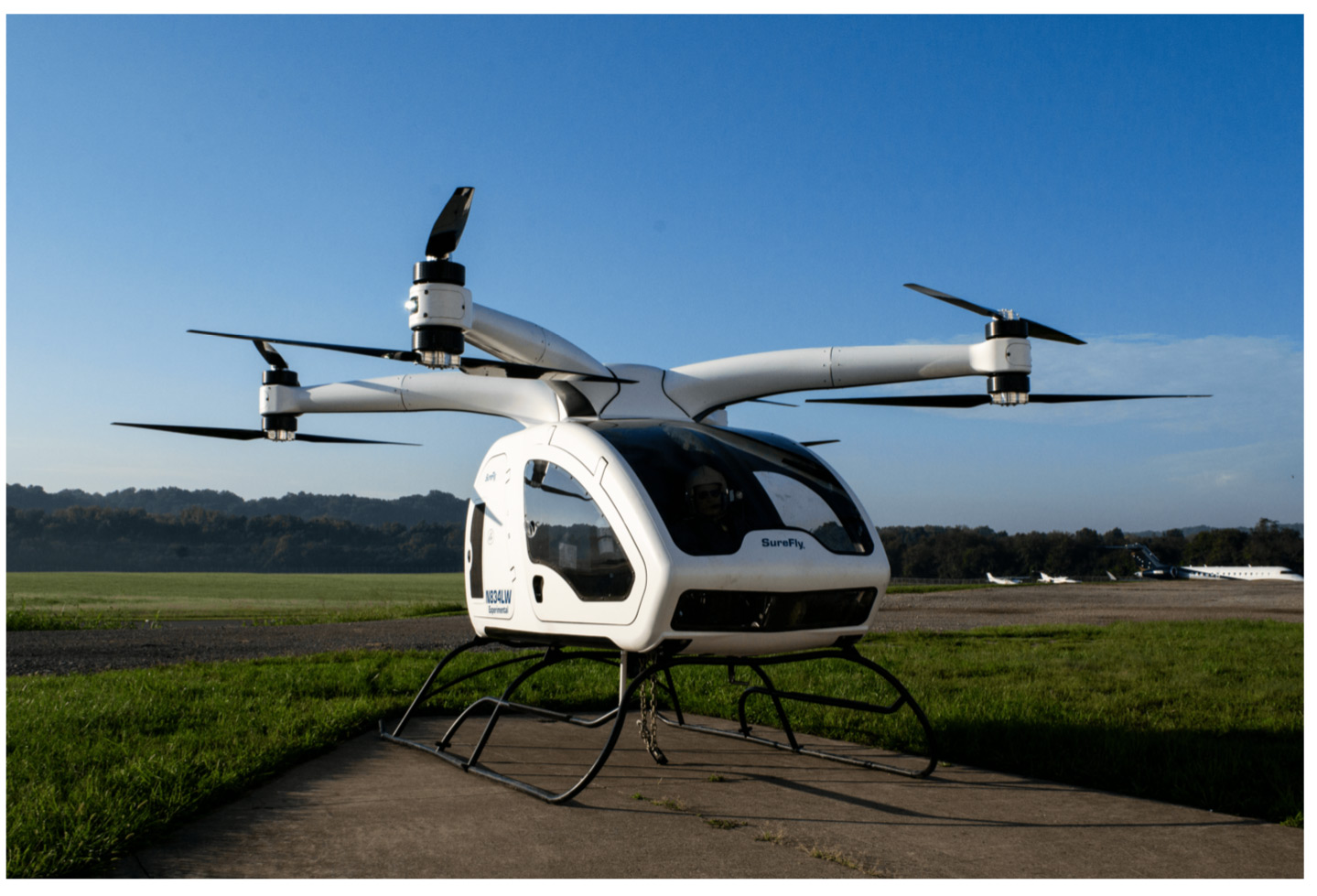
The Scorpion-3 hoverbike is another recently developed prototype:
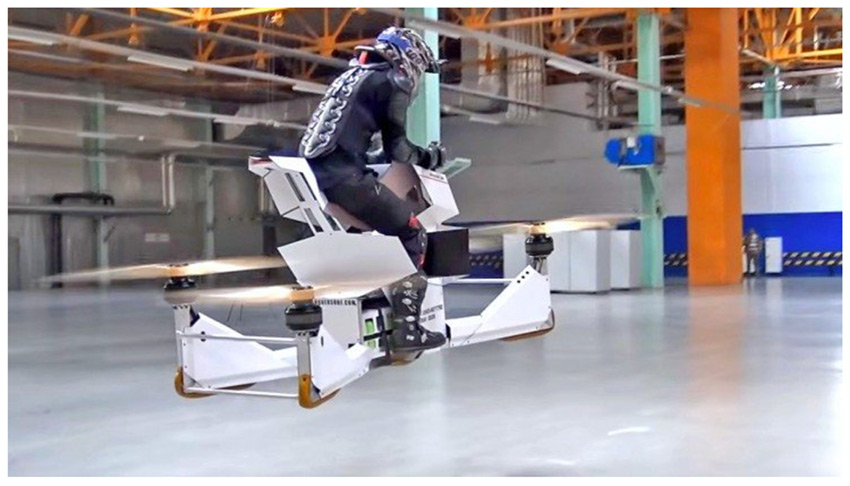
These images below show the Ehang 184 personal quadcopter:
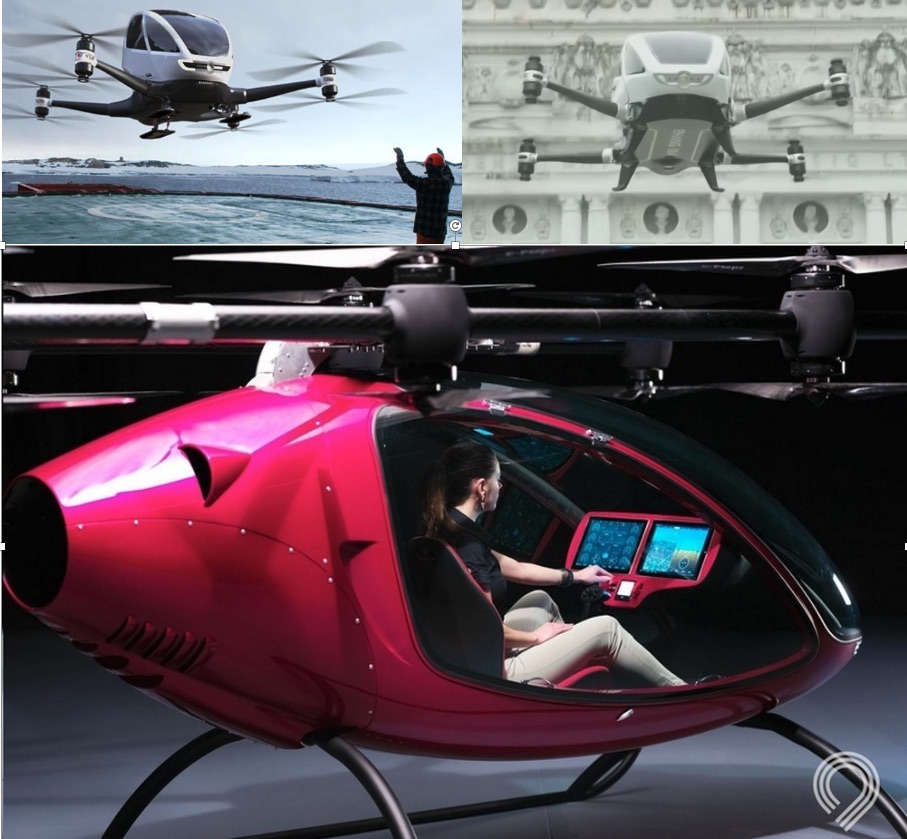
While such quadcopters are possible with today’s technology limitations, their capabilities can be extended via graphene’s capacity for structural strength and energy storage. As discussed throughout this writing, graphene is an ultra-strong, ultra-light, and ultra-conductive material that Scarcity Zero can cost-effectively synthesize to effectively unlimited scales.
With it, not only can we store the requisite energy to power a large quadcopter with minimal added weight, we can also integrate the storage medium into the fuselage while ensuring uniformly high strength. This would make quadcopters light and large enough to transport both people and materials.
After tackling energy storage and weight capacity, the next obstacle to building a large quadcopter is a design that makes the quadcopter cost effective enough to work for transportation – ideally in a way that can both fly and drive.
While we don’t have a human-sized solution yet, smaller-scale models have been recently released that demonstrably prove the concept as workable.
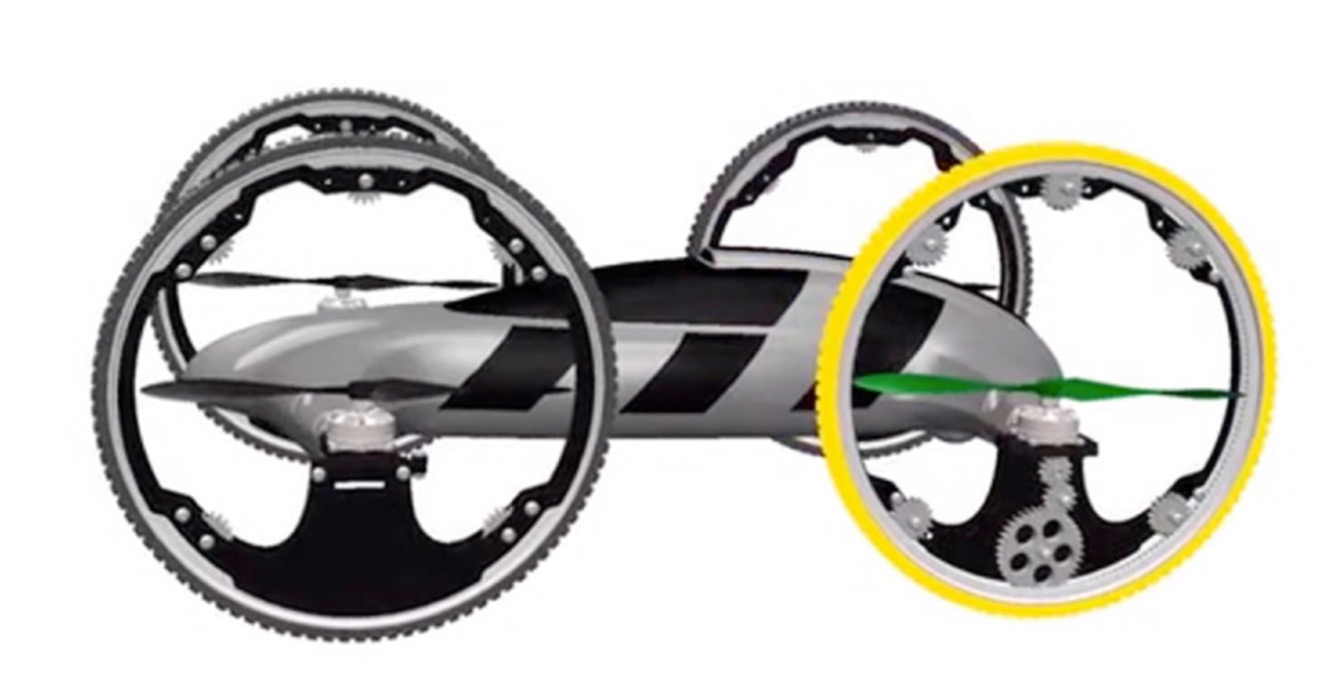
Approximately two feet long and made with the same polycarbonate materials comprising bullet-resistant glass, this vehicle can drive over obstacles at speeds exceeding 20 miles per hour and engage flight rotors at a push of a button.[45]
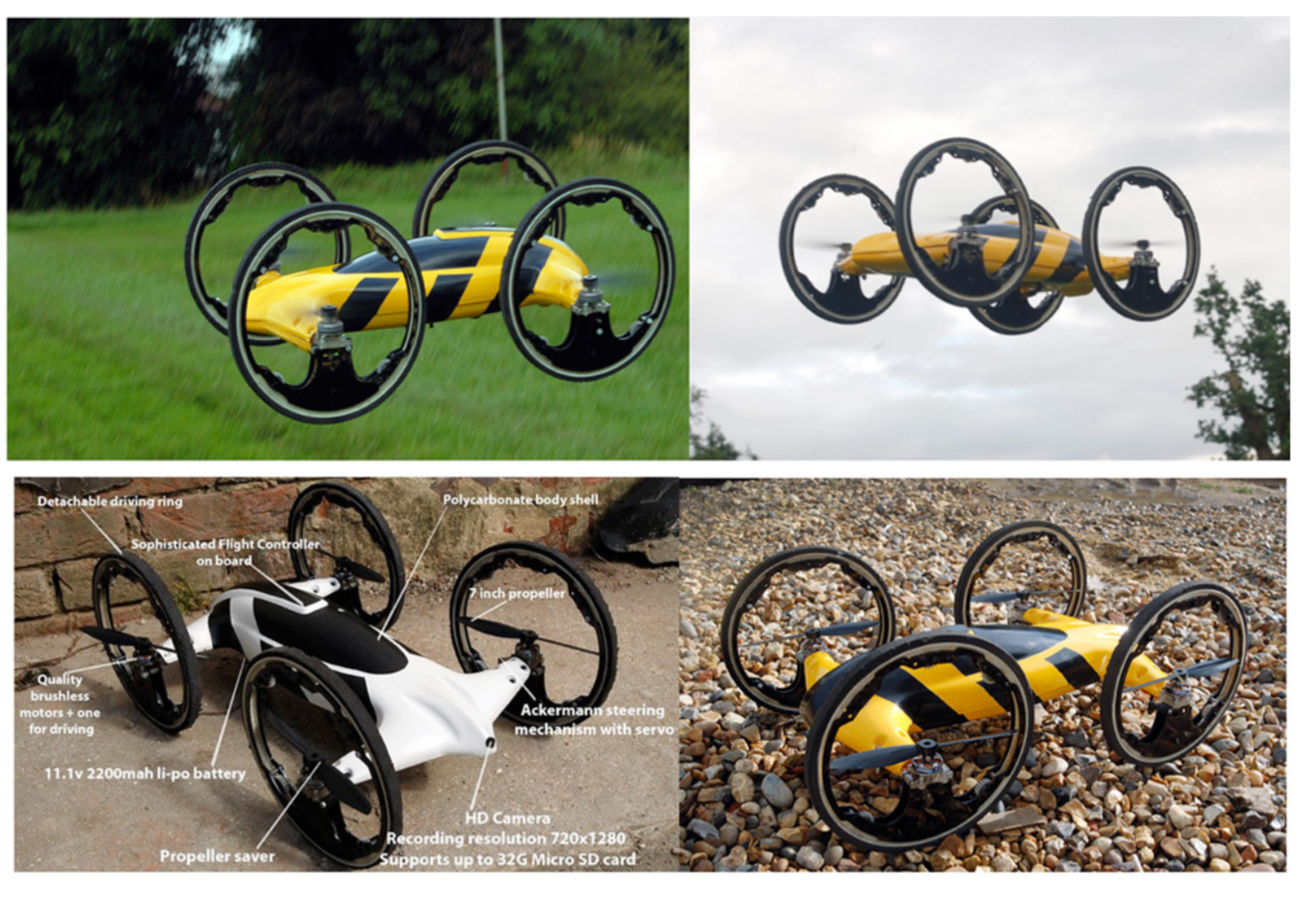
While there are of course obstacles to scaling a smaller prototype to the size of a vehicle large enough to transport people or cargo, they are absolutely solvable as they center on areas that Scarcity Zero gives us the means to address:
- Ultra-strong, lightweight materials at acceptable cost – made possible through graphene and next-generation synthetics.
- Lightweight energy storage mediums – made possible through a graphene-interwoven polymer/polycarbonate fuselage.
- Manufacturing capability – made possible through next-generation additive / 3D-printing, virtual modeling and precision automation.
 The actual flight of any such vehicle would be as simple as driving a car. Large quadcopters of 50 pounds or more are already being flown long distances using two joysticks and a first-person video screen – far less than the array of functions necessary to fly a helicopter or airplane. Any serious production of flying vehicles would of course carry more options, safety features and regulatory controls, but those are not obstructions to their delivery. It’s also true that certain automobile drivers might not demonstrate the requisite proficiency to pilot flying vehicles. Besides the application of automated flight controls, these concerns can be addressed through more lengthy training and more stringent licensing requirements. Fundamentally, these aren’t details of potential capability. They’re details of process, that and only.
The actual flight of any such vehicle would be as simple as driving a car. Large quadcopters of 50 pounds or more are already being flown long distances using two joysticks and a first-person video screen – far less than the array of functions necessary to fly a helicopter or airplane. Any serious production of flying vehicles would of course carry more options, safety features and regulatory controls, but those are not obstructions to their delivery. It’s also true that certain automobile drivers might not demonstrate the requisite proficiency to pilot flying vehicles. Besides the application of automated flight controls, these concerns can be addressed through more lengthy training and more stringent licensing requirements. Fundamentally, these aren’t details of potential capability. They’re details of process, that and only.
It’s difficult to overstate how much this could improve how we live and move. The overland distance between destinations “as the crow flies” is always shorter than the meandering roads we have to take today, and that shorter distance can significantly decrease the response time of emergency crews, help deliver rapid aid to areas without road access, and, in the case of drone-sized quadcopters, even deliver consumer goods on-demand.[46]
We are only one technological step away from having personal flying vehicles that are safe, strong and easily flown. Vehicles that can use autopilot programs that already fly and land commercial aircraft today.[47] Vehicles that, like the autonomous cars before them, can be charged via wireless power over municipally integrated renewables and through designated relays – potentially enabling effectively indefinite flight.[48]
Many of us spent our childhoods dreaming of the day when we would see flying cars. The technical capabilities that can be at our fingertips tomorrow make this dream possible, along with all others that have allowed this writing to portray a vision for a future brighter than the one we face today.
The areas it places focus, like many of the possibilities opened up by Scarcity Zero, are simply the beginning. We can extend these advancements to anything we can imagine, from our day-to-day lives, to cutting-edge aerospace that can revolutionize not just travel within our world, but well and far beyond it.[49]
This is the nature of advanced infrastructure as this writing refers to it, and the realization of the future it brings is now at our command. We now have the tools to make this – all of this – real. To manifest a reality where we can leverage technology to provide the abundance, advancement, achievement and ascension we told ourselves was the path we were destined to walk. We now have the tools to build such as a world as a testament to the choices we made in its furtherance, and the promises we made to those who came before who brought us to this singular threshold, where it could be transcended, at long last, by our own hand.
A future worth having. The start of something new. And the next giant leap.
